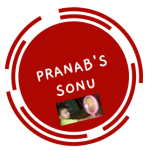Introduction
The potato is one of the most popular and versatile vegetables in the world, but its origins are shrouded in mystery. Where did this humble tuber come from? How did it spread across the globe, and become a staple food in so many cultures? In this article, we'll explore the fascinating history of the potato, from its earliest cultivation in the Andes to its role in modern agriculture and cuisine.
Part 1: Origins and Early Cultivation
The potato is native to the Andes region of South America, where it has been cultivated for over 7,000 years. The earliest evidence of potato cultivation dates back to around 5000 BCE, in what is now Peru. The indigenous peoples of the region, including the Inca, Quechua, and Aymara, developed sophisticated farming techniques to cultivate the potato in the high-altitude Andean valleys.
The Andean farmers developed over 4,000 varieties of potatoes, each adapted to different altitudes, soils, and climates. They used a system of terraced fields and irrigation canals to cultivate the crop in the harsh Andean environment. The potato was a vital part of the Andean diet, providing a source of carbohydrates, vitamins, and minerals.
The potato was introduced to Europe in the 16th century, when Spanish conquistadors brought it back from their expeditions to the Americas. The first recorded potato plantings in Europe were in Spain, but it was the Irish who embraced the potato most enthusiastically. The Irish climate and soil were ideal for potato cultivation, and the potato quickly became a staple food in Ireland.
Part 2: The Potato's Spread Across Europe
The potato's popularity in Ireland led to its spread across Europe in the 18th and 19th centuries. European farmers initially viewed the potato with suspicion, as it was a new and unfamiliar crop. But as they saw the success of the Irish potato farmers, they began to adopt the potato as a staple food.
One of the most significant events in the potato's European history was the introduction of the potato to Prussia by Frederick the Great in the mid-18th century. Frederick recognized the value of the potato as a cheap and nutritious food source for his army and his people. He ordered the planting of potatoes across Prussia, and encouraged his subjects to eat them. The potato became so popular in Prussia that it was known as the "Kartoffel," or "apple of the earth."
The potato's spread across Europe was not without its challenges. In the 1840s, a fungal disease known as potato blight devastated potato crops in Ireland, leading to widespread famine and death. The potato blight also affected other parts of Europe, including Scotland, England, and France. The devastating impact of the potato blight led to increased research into the cultivation and protection of potato crops.
Part 3: The Potato in Modern Agriculture
Today, the potato is one of the world's most important food crops, with over 300 million tons of potatoes produced worldwide each year. Potatoes are grown in every continent except Antarctica, and are a staple food in many cultures.
The potato is an important crop for small-scale farmers in developing countries, as it is easy to grow, requires little water, and can provide a reliable source of income. In many developing countries, potatoes are grown as a subsistence crop, providing a vital source of nutrition for families.
In developed countries, the potato is an important commercial crop, with large-scale industrial farming operations dedicated to potato cultivation. Modern farming techniques, suchas mechanization, crop rotation, and pest control have made potato farming more efficient and productive than ever before.
One of the biggest challenges facing modern potato farming is the threat of disease. Potato blight, the same disease that devastated Ireland in the 1840s, is still a major threat to potato crops worldwide. Other diseases, such as blackleg and bacterial wilt, also pose a significant risk to potato farmers.
To combat these diseases, modern potato breeding programs focus on developing disease-resistant potato varieties. These varieties are created through selective breeding, genetic modification, and other advanced techniques. Disease-resistant potatoes can help farmers reduce the need for chemical pesticides and improve the sustainability of potato farming.
Part 4: The Potato in Cuisine
The potato's versatility has made it a staple ingredient in cuisines around the world. From French fries to mashed potatoes, the potato can be prepared in a variety of ways and used in a wide range of dishes.
In the United States, the potato is a key ingredient in many classic dishes, such as potato salad, potato chips, and hash browns. In Europe, the potato is used in traditional dishes such as fish and chips in the UK, moussaka in Greece, and gnocchi in Italy. In South America, the potato is a key ingredient in dishes such as causa rellena in Peru and papa a la huancaína in Bolivia.
In recent years, the potato has also become a popular ingredient in plant-based diets. Vegan and vegetarian recipes often feature potatoes as a key ingredient, due to their versatility and nutritional value.
Part 5: Conclusion
The potato's journey from the Andes to the dinner table has been a long and fascinating one. From its early cultivation by Andean farmers to its spread across Europe and beyond, the potato has played a vital role in human history.
Today, the potato remains an important crop and a staple food in many cultures. Its versatility and nutritional value make it an ideal ingredient for a wide range of dishes, and its ease of cultivation makes it a valuable crop for small-scale farmers in developing countries.
As the world faces new challenges, such as climate change and food insecurity, the potato will continue to play an important role in agriculture and cuisine. With ongoing research and development, the potato has the potential to become an even more valuable and sustainable crop for future generations.



You must be logged in to post a comment.